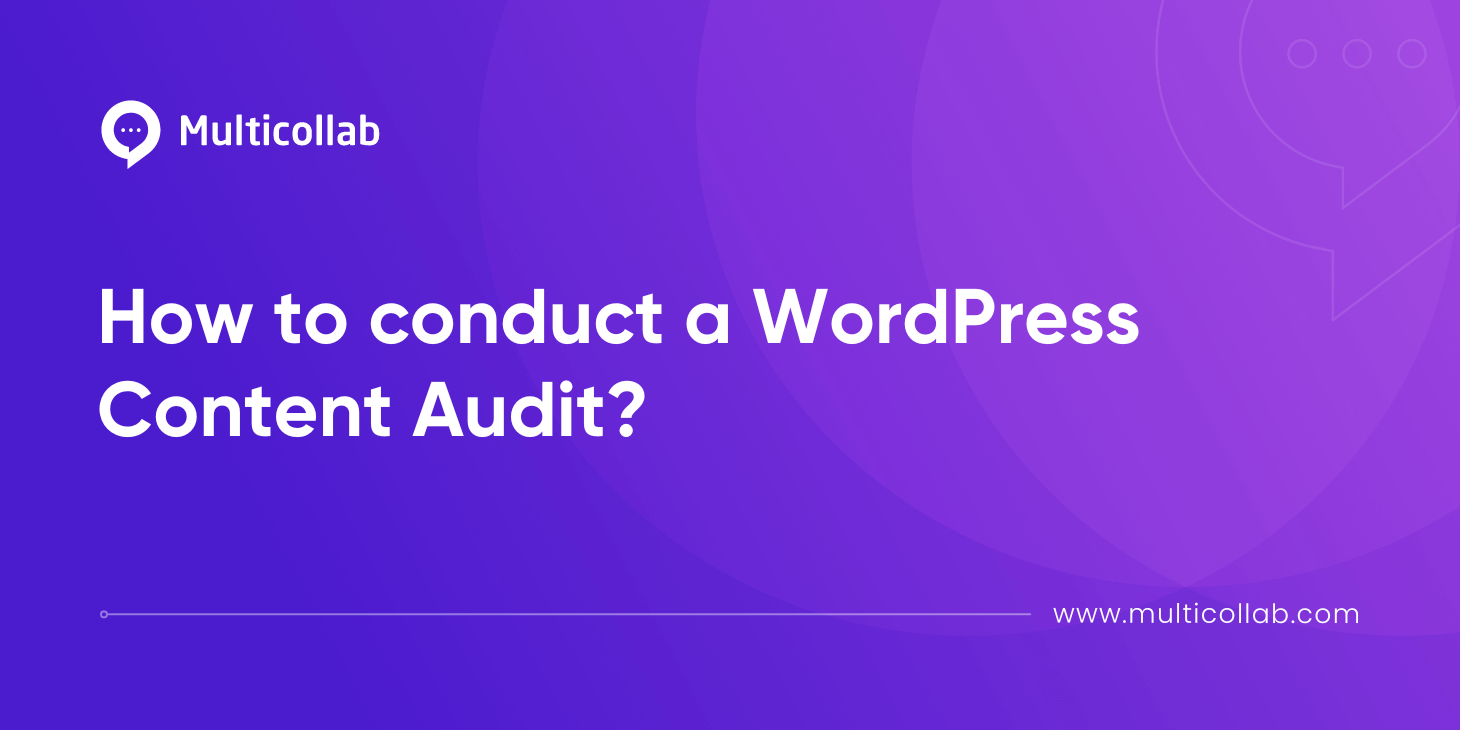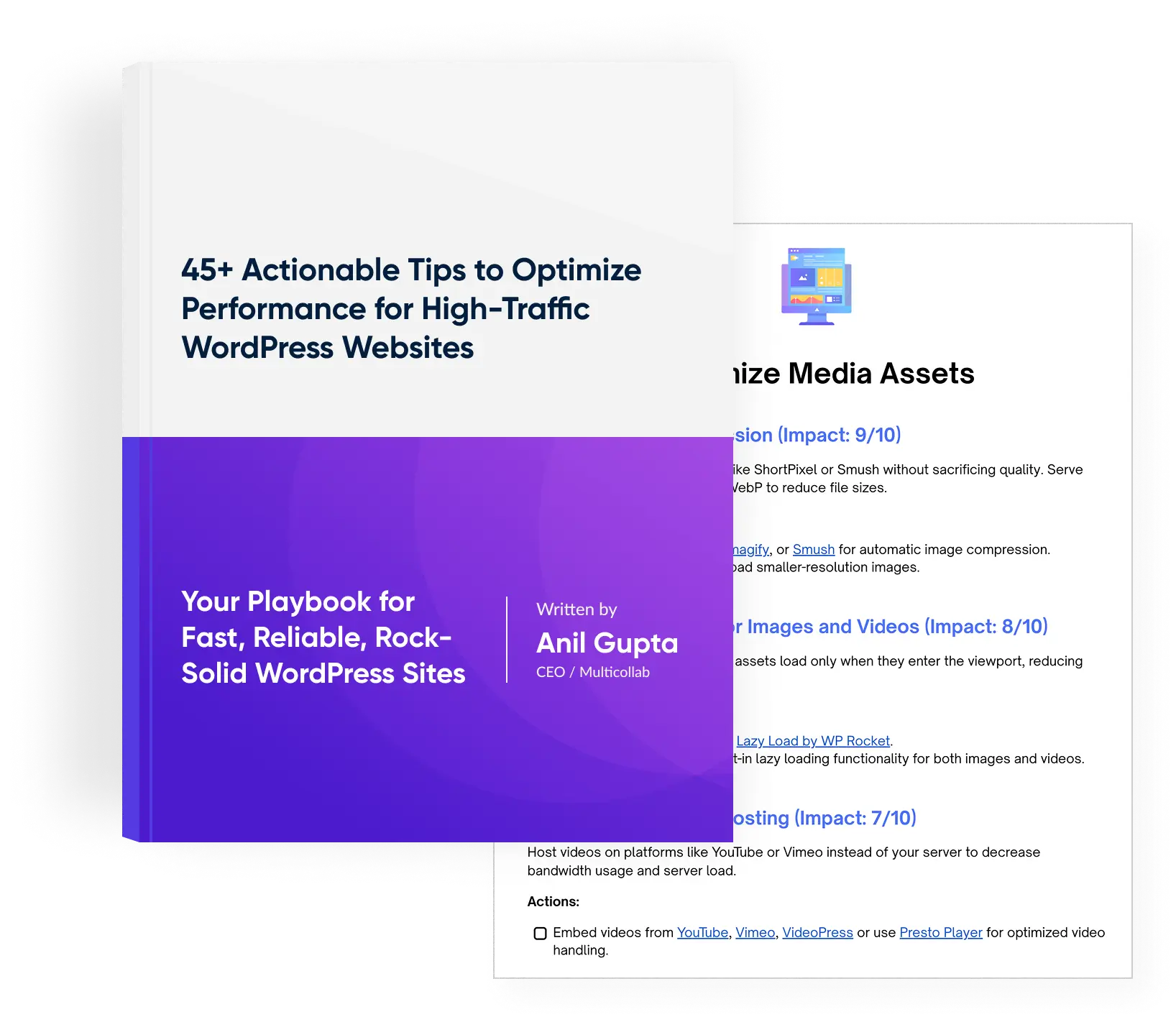Table of Contents
Conducting a content audit is critical for ensuring your WordPress site’s health and effectiveness. Regular audits help you identify underperforming content, optimize for SEO, and maintain consistency across your site.
Thankfully, several tools and plugins can simplify this process, providing valuable insights and actionable data. In this blog post, we will take a comprehensive look at the significance of content audits and outline essential steps for conducting one effectively.
Why Conduct a Content Audit?
Before diving into the tools, it’s essential to understand the significance of a content audit. Conducting a content audit offers numerous benefits that can elevate the performance and impact of your WordPress site. Here’s why a content audit is crucial:
To identify Underperforming Content: A content audit helps you review website content, and pinpoint posts and pages that aren’t attracting traffic. By identifying underperforming content, you can decide whether to update, repurpose, or remove these pieces, ensuring your site remains relevant and valuable to your audience.
To improve SEO: Optimizing your content for search engines is key to driving organic traffic. A content audit ensures your content is SEO-friendly by checking for keyword usage, meta descriptions, internal linking, and other SEO factors. This helps improve your site’s visibility and ranking in search engine results.
To enhance User Experience: Outdated or irrelevant content can frustrate visitors and damage your site’s credibility. A content audit allows you to remove or update such content, ensuring your audience enjoys a seamless, informative, and engaging experience on your site.
To maintain Consistency: Consistency in tone, style, and branding is essential for building a strong brand identity. A content audit helps ensure that all content on your site adheres to your brand guidelines, creating a cohesive and professional appearance that resonates with your audience.
To boost Engagement: High-potential refreshed and repurposed content can significantly boost engagement. A content audit helps you identify such content and breathe new life into it, increasing its impact and reaching a broader audience.
How to prepare for the Content Audit?
Preparation is key to a successful content audit. By setting the stage correctly, you can ensure a smooth, efficient, and thorough audit process. Here’s how to prepare effectively:
1. Set Clear Goals
Begin by defining specific, measurable objectives for your audit. Clear goals will guide your efforts and help you stay focused. Common goals include:
Improving SEO Rankings: Enhancing your content’s search engine performance.
Increasing Engagement: Boosting user interaction with your content.
Updating Outdated Information: Ensuring all information is current and relevant.
Enhancing User Experience: Improving navigation, readability, and overall user satisfaction.
Maintaining Content Quality: Ensuring consistency in tone, style, and accuracy.
2. Gather Your Content Inventory
Creating a comprehensive list of all content on your site is crucial. This inventory will serve as the foundation for your audit. Follow these steps to gather your content inventory:
Export a List of All Posts and Pages: Use WordPress’s built-in export tools or plugins like “Export All URLs” to generate a list of your content.
Include Media Files: Don’t forget to include images, videos, and other media files that may need to be reviewed for relevance and optimization.
Categorize Your Content: Organize your content by type (e.g., blog posts, pages, product descriptions) to make the audit more manageable.
3. Compile Essential Data
Collect data that will provide insights into how your content is performing. This data will help you make informed decisions during the audit. Key data points include:
Traffic Metrics: Page views, unique visitors, bounce rates, and average time on page (available from Google Analytics).
SEO Metrics: Keyword rankings, organic search traffic, and backlink profiles (available from tools like Google Search Console, SEMrush, or Ahrefs).
Engagement Metrics: Social shares, comments, and conversion rates.
Content Quality Metrics: Readability scores, grammar and spelling checks (available from tools like Grammarly or Hemingway Editor).
4. Establish a Framework for Analysis
Having a structured approach to analyzing your content ensures consistency and thoroughness. Consider creating a checklist or template to guide your audit process. Elements to include in your framework:
Content Performance: Evaluate each piece based on traffic, engagement, and conversion metrics.
SEO Optimization: Check for proper keyword usage, meta descriptions, alt tags, and internal linking.
Content Quality: Assess readability, grammar, accuracy, and relevance.
User Experience: Review navigation, mobile-friendliness, and page load times.
5. Set Up Necessary Tools and Plugins
Equip yourself with the right tools and plugins to streamline the audit process. Essential tools include:
Google Analytics and Google Search Console: For traffic and SEO data.
Screaming Frog SEO Spider: For crawling your site and identifying SEO issues.
Yoast SEO: For on-page SEO analysis and recommendations.
SEMrush or Ahrefs: For in-depth SEO and content analysis.
Grammarly or Hemingway Editor: For checking content quality and readability.
6. Schedule Time and Resources
A thorough content audit requires time and effort. Schedule dedicated time slots for conducting the audit and ensure you have the necessary resources (such as team members or external help) to assist you. Break down the audit into manageable sections to avoid overwhelm and ensure thoroughness.
Essential Tools and Plugins for Content Audits
Conducting a thorough content audit requires the right tools and plugins to streamline the process and provide comprehensive insights. Here are some essential tools and plugins that can help you conduct an effective content audit for your WordPress site:
| Tool/Plugin | Purpose | Key Features | How to Use |
| Google Analytics | Data-driven site optimization | Track page views, bounce rates, and average time on page | Install and set up on your WordPress site. |
| Identify high and low-performing content | Use data to improve content and user experience. | ||
| Understand audience demographics and behavior | |||
| Google Search Console | Enhance search visibility and fix errors | Check indexing status and optimize visibility | Link to your WordPress site and monitor reports. |
| Identify traffic-driving search queries | Use insights to fix issues and improve SEO. | ||
| Monitor and resolve crawl errors | |||
| Yoast SEO | SEO optimization and readability improvements | SEO analysis and readability check | Install the plugin and analyze posts and pages for SEO. |
| Suggestions for internal linking | Follow recommendations to optimize content. | ||
| Keyword optimization | |||
| Screaming Frog SEO Spider | Comprehensive SEO audit | Audit on-page SEO and identify broken links | Crawl your site to identify SEO issues and broken links. |
| Generate XML sitemaps | Use the data to fix and optimize content. | ||
| Analyze metadata and discover duplicate content | |||
| SEMrush | In-depth SEO and content analysis | Content audit and gap analysis | Use for comprehensive SEO and content strategy insights. |
| Backlink audit and competitive analysis | Identify gaps and opportunities for improvement. | ||
| Keyword tracking and suggestions | |||
| Ahrefs | Advanced SEO and competitor analysis | Site audit and content explorer | Conduct site audits and analyze competitor strategies. |
| Backlink analysis and competitor insights | Optimize content based on findings. | ||
| Keyword research and rank tracking | |||
| MonsterInsights | Integrate Google Analytics with WordPress | Real-time stats and analytics reports | Install and connect to Google Analytics for integrated insights. |
| Enhanced eCommerce tracking | View analytics data directly in the WordPress dashboard. | ||
| Content report showing top-performing posts and pages | |||
| WP Meta SEO | Manage and optimize metadata | Bulk metadata editing | Install the plugin to edit metadata and check for broken links. |
| Broken link checker | Use the SEO analysis for recommendations and improvements. | ||
| SEO analysis and recommendations |
Steps for Conducting a WordPress Content Audit
Conducting a WordPress content audit involves several steps to ensure a thorough review of your site’s content and its performance. Here’s a simplified guide on how to conduct a WordPress content audit:
Define Objectives: Start by defining clear goals for your audit, such as improving SEO, enhancing user experience, or identifying outdated content.
Gather Content Inventory: Export a list of all posts, pages, and media files from your WordPress site to create a comprehensive inventory.
Analyze Content Performance: Use tools like Google Analytics, Google Search Console, or WordPress plugins to assess the performance of your content creation workflow and other metrics such as traffic, engagement, and SEO rankings.
Review Content Quality: Evaluate the quality of each piece of content based on readability, accuracy, relevance, and consistency in tone and style.
Check for SEO Optimization: Ensure each piece of content is optimized for search engines by analyzing keyword usage, meta tags, internal linking, and other SEO factors.
Identify Duplicate Content: Use tools like Screaming Frog SEO Spider or SEMrush to identify and address duplicate content issues.
Assess User Experience (UX): Evaluate the overall user experience of your site, including navigation, mobile-friendliness, and page load times.
Document Findings: Keep detailed records of your audit process, including tools used, findings, and action plans for improvement.
Develop an Action Plan: Create a prioritized action plan based on your audit findings to address content issues and optimize your WordPress site.
Implement Post-Audit Actions: Take proactive steps to update, repurpose, or remove content, optimize for SEO, and improve user experience based on your action plan.
Schedule Regular Audits: Make content auditing an ongoing process by scheduling regular audits to ensure your WordPress site remains optimized and effective over time.
Common Content Audit Mistakes to avoid
- Conducting an audit without clear objectives.
- Ignoring SEO considerations during the audit.
- Relying on manual methods or insufficient tools.
- Focusing solely on qualitative assessments.
- Identifying outdated content but not taking action.
- Not checking for duplicate content issues.
- Focusing solely on content without considering UX.
- Not documenting the audit process and findings.
- Neglecting content quality assessments.
- Conducting one-time audits without regular follow-ups.
Conclusion
Regular content audits help you identify underperforming content, optimize for SEO, and maintain consistency across your site. Thankfully, several tools and plugins can simplify this process, providing valuable insights and actionable data.
From setting clear goals and gathering content inventory to utilizing essential tools and implementing post-audit actions, each stage plays a vital role in optimizing your site’s performance and user experience. By avoiding common content audit mistakes and following best practices, you can ensure your WordPress site remains dynamic, relevant, and successful.







